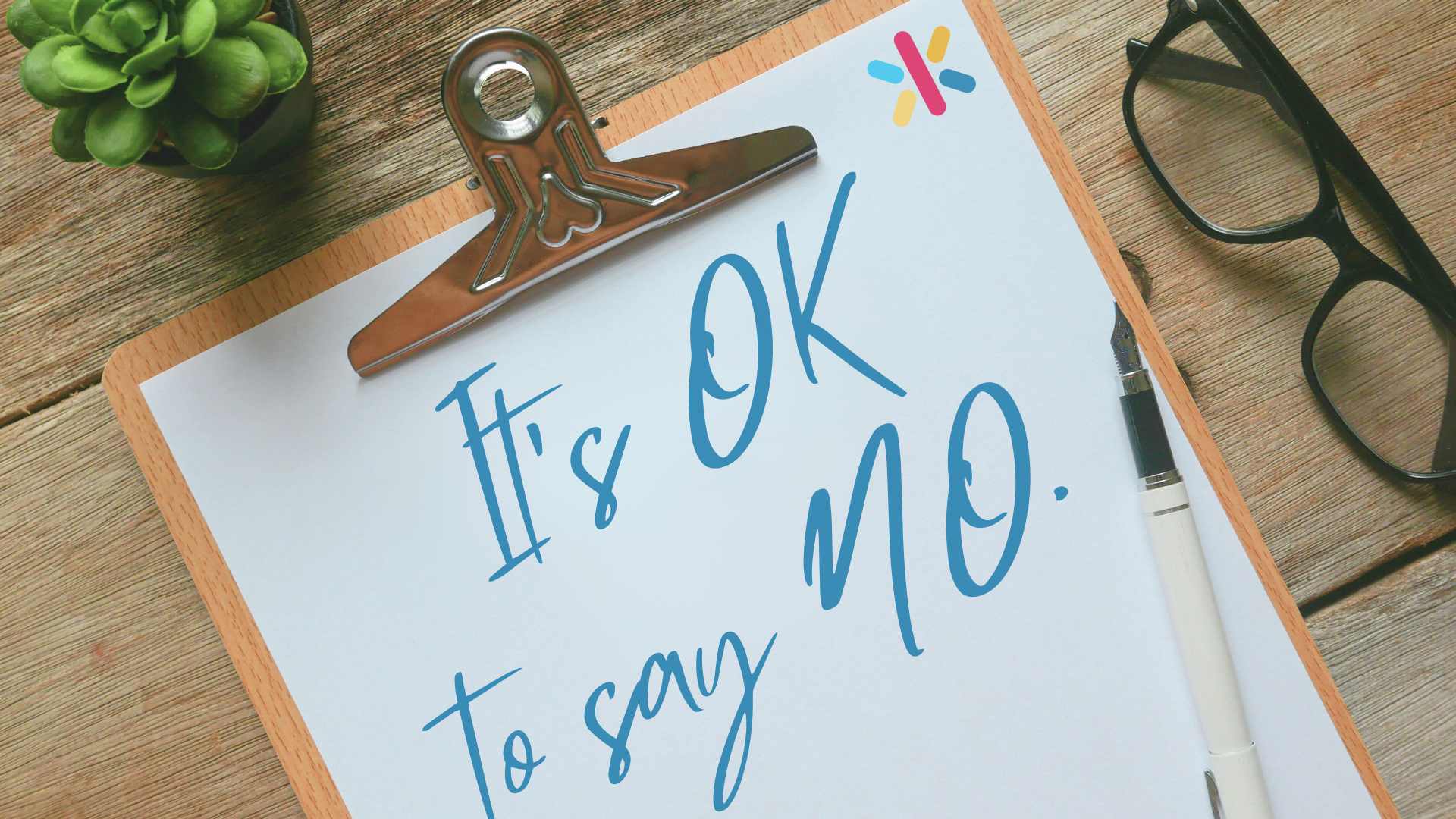How to say no. Ne. Nej. Nee. Non. Nein. Na. No matter what language you speak, it can be surprisingly difficult to say “no.”
Whether a new entrepreneur, small business owner, or seasoned executive, learning to be more comfortable saying “no” is a crucial skill to practice and, eventually, master.
There are plenty of reasons we feel uncomfortable saying no.
- You may worry that saying no will disappoint others, making them feel rejected or let down.
- Or, you may feel that saying no will make you appear unhelpful or unlikeable.
- Sometimes, a reluctance to say no is tied to a fear of missing an opportunity or damaging a relationship.
- If your business is new, saying no can be incredibly uncomfortable – after all, if you’re turning down a new client or project, can you be sure that you’ll find another one to take its place?
While all of the concerns above are worthy of your consideration, there are times when “no” is the only answer you can give. You may find that your business’s success depends on it.

Being Clear Is Being Kind: Avoid Dancing Around the Edges.
When you have to say no, whether to an employee or a client, your instinct may be to sugarcoat your response to soften the blow.
While this may make it feel easier for you, this approach can drag out and muddle your response.
In a worst-case scenario, you might give the other person you’re speaking with a false sense of hope or cause them to misunderstand you.
At best, you may appear indecisive, leaving the door open when you intend to close it.
Saying no politely and clearly doesn’t mean you can’t offer an explanation.
For example, if you have been invited to speak at a conference that isn’t a good fit for you, you can make it clear why you’re saying no without closing the door on future invitations.
“I appreciate you asking; currently, I’m focused on x,y, and z right now. THIS OTHER PERSON is doing interesting work that may be of interest to your attendees. I’d be happy to arrange an introduction.”
Though you can’t control whether someone will be disappointed in the content of your response, its delivery is entirely up to you. Whether you’re declining a request from an employee, a client, or someone in your network, the kindest thing you can do is demonstrate your respect for them and their time by being clear and direct.

Priorities: Saying ‘No’ Creates Space for the Right ‘Yes.’
For many entrepreneur owners and business leaders, “no” can be among the most challenging words in their vocabulary.
When your business is starting out, you may feel that you have to accept every new project and opportunity – a habit that, once built, often continues.
In truth, leaders who say “yes” to every offer are more likely to struggle than succeed. If you are worried that turning down an opportunity will be bad for you or your business, ask yourself what you’d gain from saying “yes” and what you could miss out on.
For every “yes” you give, you will need to say “no” to something else. If you’re accepting offers (or new hires) that aren’t a good fit for your business, you will eventually have to turn away better opportunities.
By reframing it in this way, you can shift your thinking so you no longer see saying “no” as a potential missed opportunity but rather as creating space for the right opportunity.

No Need to Over-Explain: ‘No’ Is a Complete Sentence.
Sometimes, offering “no” without any additional explanation or context is the best option. After all, “no” is a complete sentence and can convey all the necessary meaning.
A firm “no” is often necessary when your previous responses are being overlooked or ignored. You may wish not to disclose your reason for saying no for other reasons, and you should not feel compelled to expand if you would prefer not to.
People’s reactions to a firm yet polite “no” can often give you insight into how well they will respect you and your boundaries in other circumstances. In this way, saying “no” can often serve as a complete response while revealing aspects of someone’s character that you may not have seen before.
Conclusion
If you have been sensing that your communication is unclear, that your team sometimes re-hashes topics you believed were solved, or something similar is happening with clients, it may be time to explore how business coaching can help. Step one is to meet with Ken for a 15-minute, no-strings-attached call to see how (or if) we are a fit.
Ken Kilday is the CEO and Founder of Leader’s Cut: The Ken Kilday Coaching Experience. As an executive coach, business strategist, and LinkedIn expert, he founded his company to work with Entrepreneurial Leaders to master organizational processes, communication, and accountability by working individually and with the entire leadership team.




